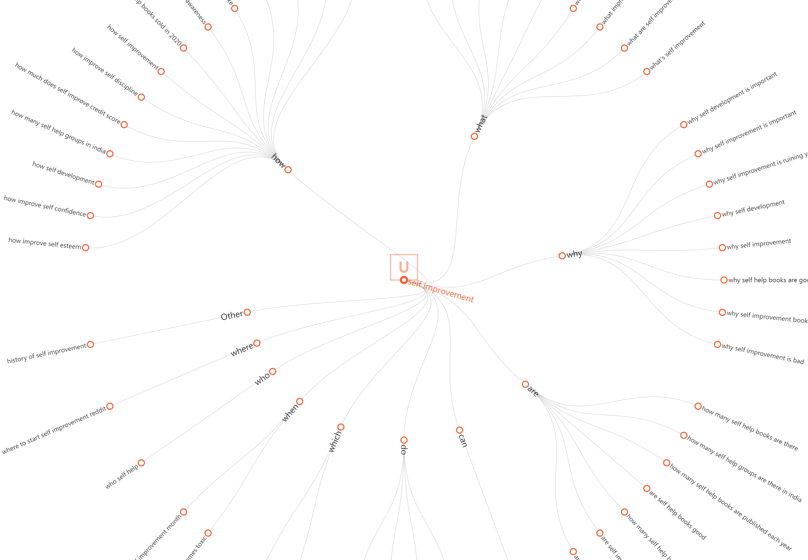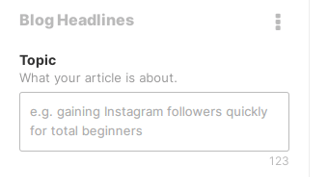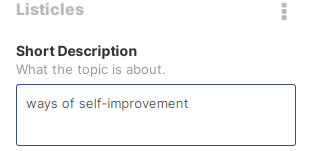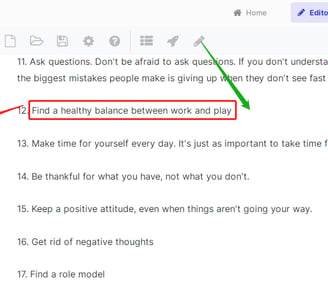How To Write Listing Articles With Wordhero AI
Learn how to write listing articles with Wordhero AI. Wordhero is a new AI-powered tool that writes listing articles for you.
AI WRITING TIPS AND TRICKS
If you're a blogger, you know the importance of listing articles to get indexed and ranked. But is there an easier way to get them? With Wordhero AI, you can get a listing blog post of 1500 words in 10 minutes!
Not only does Wordhero AI save you time, but it also helps you improve your SEO. With its help, you can ensure that your articles are more likely to show up in search engine results. So let's try it out today!


What is Wordhero AI?
Wordhero AI is a tool that helps writers create listing articles. Listing articles are a type of article that lists things, such as the top 10 things to do in a city, the best books of the year, or the worst movie sequels.
Writers can use Wordhero AI to help them come up with ideas for their articles and to get help with writing headlines and descriptions. The tool also allows writers to see how their articles will look before they publish them.
What are listing articles?
Listing articles are a type of article that provide readers with a list of items, typically related to a certain topic. These articles can be helpful for readers who are looking for information on a specific topic, or who want to find a list of recommended items.
Some common topics for listing articles include books, movies, restaurants, and travel destinations. However, there are endless possibilities for what could be included in a list. Listing articles can be helpful when readers are trying to make decisions, such as which book to read next or where to travel.
If you're interested in writing a listing article, it's important to start by brainstorming a list of potential topics. Once you've settled on a topic, research the individual items that you'll include in the list. Finally, write your article in an engaging and informative way.
How to write listing articles with Wordhero AI?
Listing articles are popular because they are easy to read and share. They are also a great way for writers to show off their knowledge about a certain topic. If you're looking for a way to get started with writing online, listicles are a great option!
Let's find out the 5-step writing process with Wordhero AI's assistance:
Step 1: Research your topic
Before you can write a listing article, you need to do your research. This step should help you get a better understanding of your topic and what needs to be included in your article.
If I am looking for help with topic research, I look no further than Ubersuggest. This keyword research tool can make a big difference in my content strategy. Also if you are not limiting your budget like me, you can also choose other tools such as SEMRush, Ahrefs, and many other options.
Ubersuggest helps me understand search intent, which is key to creating content that resonates with your audience. It also allows you to see the differences between similar keywords, such as keyword search volume, and SEO difficulty. And in Keyword Overview, we can even see some clicking and non-clicking data for specific terms. In this way, we can target the ones that are most likely to convert.
Overall, Ubersuggest is a great help when it comes to keyword research and developing a sound content strategy. If you're not using it already, definitely give it a try!
For the topic keyword, we can see take it as an overview of a keyword group.
A group of keywords is a set of words that are closely related in meaning. They are often used together in search engines and in marketing campaigns. When used together, they can help to create a more targeted and effective message.
There are a few things to keep in mind when using keyword groups.
Use the keyword sparingly. Too many keywords can be overwhelming and difficult to read.
Choose relevant keywords for your topic and audience. Using irrelevant keywords will not only fail to attract attention but could also result in penalties from search engines.
Use keyword groups strategically. Using too many keywords in one area can dilute their impact and make your content appear spammy.
Such as we can use the AnswerThePublic type of keyword groupings, and select some keywords to be covered in our listing articles:


Step 2: Choose a focus keyword
After you’ve learned the topic for overall viewing, it’s time to move on to the next step: choosing a focus keyword.
Your focus keyword is the word or phrase that you want to rank for in search engines. It’s important to choose a keyword that is relevant to your topic and has a decent amount of monthly searches. You can use a free tool like Google AdWords Keyword Planner to research keywords. Or you can use a paid tool, my pick is Ubersuggest, and any other tools are fine.
Generally, it's highly recommended that new websites should focus on low SEO difficulty keywords (Under 35 score of up to 100 in Ubersuggest). Other tools may mark the scoring index as Keyword Difficulty(KD), or Keyword Ranking(KR). But we simply remember one thing: the higher the score is, the more competitive it is to rank.
Lately, I am studying Doug Cunnington's KGR method (Keyword Golden Ratio):
I know there will be limitations to this technique, but I would run a test to avoid a new website's Sandbox time. It's quite manual work, and "ignores" the SEO difficulty. So many people would not do manual keyword research and depend on keyword tools too much. I would do a series of SEO keyword research tests.
Once you’ve chosen a keyword, make sure to sprinkle it throughout your article. Use it in the title, in the first sentence, in the body, and in the conclusion. But don’t go overboard—keyword stuffing will not only turn off readers but will also get you penalized by Google.
Step 3: Write your article with Wordhero AI
Assuming you have a Wordhero AI membership account, write your listing article using the Wordhero app's Editor.
There is no "listings" tab on the toolkit. So we'll go through the process by using several AI writing tools.
1st is to generate your headline for this listing article. There is a specific tool for this purpose: Blog Headlines.


One of my very important tips for headline creation in using Wordhero AI is: to keep it typical and informative. You can revise headlines or titles later on. But for the AI-generating process, you should compromise to these settings:
Use a typical headline format.
By saying healing formats, we can set examples such as a "what-is" type, a "how-to" type, a "product review" type, etc.
If you want the WordHero AI to generate high-quality content, you must be specific about the content type. AI can produce better results when given a specific format to follow. This is because AI systems are designed to learn and recognize patterns. When given a specific format, the AI system can better identify the appropriate content to generate.
This approach can benefit content types including articles, blog posts, and even social media updates. By providing a specific format for the AI system to follow, you can get better results in terms of both quality and quantity of content.
Include your targeted keywords in the headline.
When you're crafting headlines for your articles, it's important to include targeted keywords. This will help ensure that your content is focused and informative. And that you avoid straying into the non-relevant territory.
Why can't you keep your keywords meaningful and relevant to the article's content? Because your prioritized keyword is not prominently featured in the headline.
What is more, you might keep the keyword with a reasonable search volume if not getting satisfactory output. In case you are using some zero search volume keywords, and the generated content is quite poor or unrelated, please consider changing a related keyword of high search volume for content generation. And replace the target keyword when finished.
Secondly, we try to use the "Write More" tool once we have made a sample of the content. Or directly use the "Blog Paragraph" tool for more detailed content:


Then, just start writing with Wordhero AI!
The Wordhero will give you suggestions for outlines. And then we generate more words and phrases based on each outline.
So regarding listings, There are two main steps for generating the content:
Firstly, we work on its listing entities. In the video, I input "ways of self-improvement", and "ideas of self-growth" in the "Listicle" AI tool for listing points:


So when we have the "entity" of each listing point, we are able to expand the sentence into one or several paragraphs. And in this way, we can build a long list for the same topic.
Step 4: Optimize your article with Wordhero AI
If you're looking to take your listing articles to the next level, Wordhero AI can help us a lot. With its advanced artificial intelligence, Wordhero AI can help you optimize our articles for maximum impact. Here's how to get started:
First, generate outlines that cover sub-topics as much as we can. Usually, when we follow a certain AI writing pattern, such as a "how-to" writing template, we'll have better keyword coverage.
Then, we can run a latent semantic analysis process to find out what keywords to be covered. And those keywords should be naturally applied to the draft.
Finally, we'll wait for 1 to 3 months to see how it works. For some new websites or competitive niches, maybe longer time, 3 to 6 months. The SERP is not always the same, we need to update the content to compete with new trending if we are not in the top 3 positions.
Step 5: Publish and promote listing articles
There are a number of ways to promote your listing article. You can share it on social media, post it in forums, or even submit it to directories.
One great way to get exposure for your listing article is to submit it to social media sites like Facebook, Twitter, and LinkedIn. This will help to ensure that people who are interested in the topic will see your article.
Another great way to promote your listing article is to post it in forums related to the topic. This will give you the opportunity to engage with potential readers and answer any questions they may have.
Finally, you can also submit your listing article to directories. This will help people who are searching for information on the topic to find your article easily.
Why do we use AI to generate a listicle?
In a world where everyone is trying to be creative, it's no surprise that we're using AI to generate a listicle. After all, who has the time to sit down and come up with 20 interesting things on their own? However, there are some benefits to using AI to generate a listicle.
First of all, it's important to remember that AI is not just a copy and paste machine. It can actually help you come up with new ideas and perspectives that you may not have thought of before.
Secondly, using AI can help you save time. If you're struggling to come up with a list on your own, it can be much faster to let the machine do the work for you.
Finally, one of the best things about using AI to generate a listicle is that it can help you avoid getting stuck in a rut. You might be a creative person, but if you always use the same ideas for your articles, your readers are going to get bored and find ways to avoid reading your content. Instead of giving them the same old thing week after week, just let an AI generate a few new ideas for you.
Traditional ways to build a listing article
When it comes to ranking on Google’s search engine results pages (SERP), there are a number of traditional methods that can be used to build a listing article.
One such method is SERP analysis, which involves looking at the top-ranking articles for a given keyword and reverse-engineering what they did to achieve their ranking. This can be a useful way to identify on-page optimization opportunities and potential link-building targets. As in the video, I was mentioning semantic analysis, it is the same way as SERP analysis. I just covered the suggested keywords.
Another method is to make use of Google’s “People Also Ask” and “Related Searches” features. These can be used to generate ideas for new content or angles to approach existing content. But remember, simply rephrasing the existing content will hurt us. We can rewrite content partially, and we should add extra information or insights to the same topic.
Finally, keyword research is another essential component of any listing article writing. By understanding what people are searching for, you can better optimize your site and create content that targets those keywords.
Conclusion
In conclusion, follow these steps to produce a high-quality listing article with Wordhero AI:
Understand what your readers want by analyzing your topic and focused keywords;
Use Wordhero AI to write a catchy headline that accurately reflects the article's content ;
Use Wordhero AI to write a detailed description of the subject, listing its best features;
Edit and proofread your article before publishing it;
Promote your content via social media or other channels.
By following these steps, you can easily write listing articles with Wordhero AI. What is more, you will be able to produce quality content that your readers want and help them find the information they need.